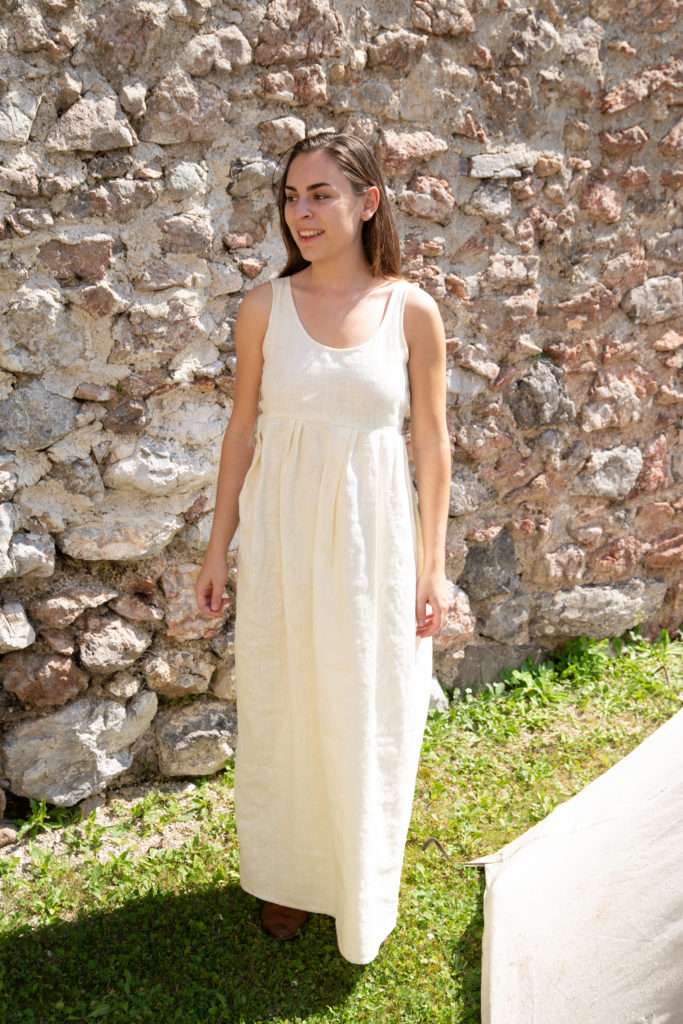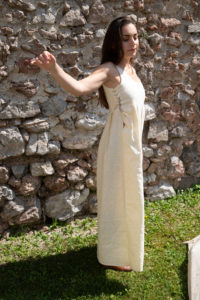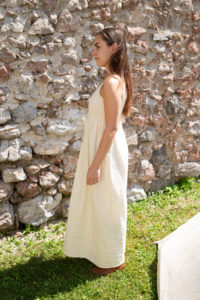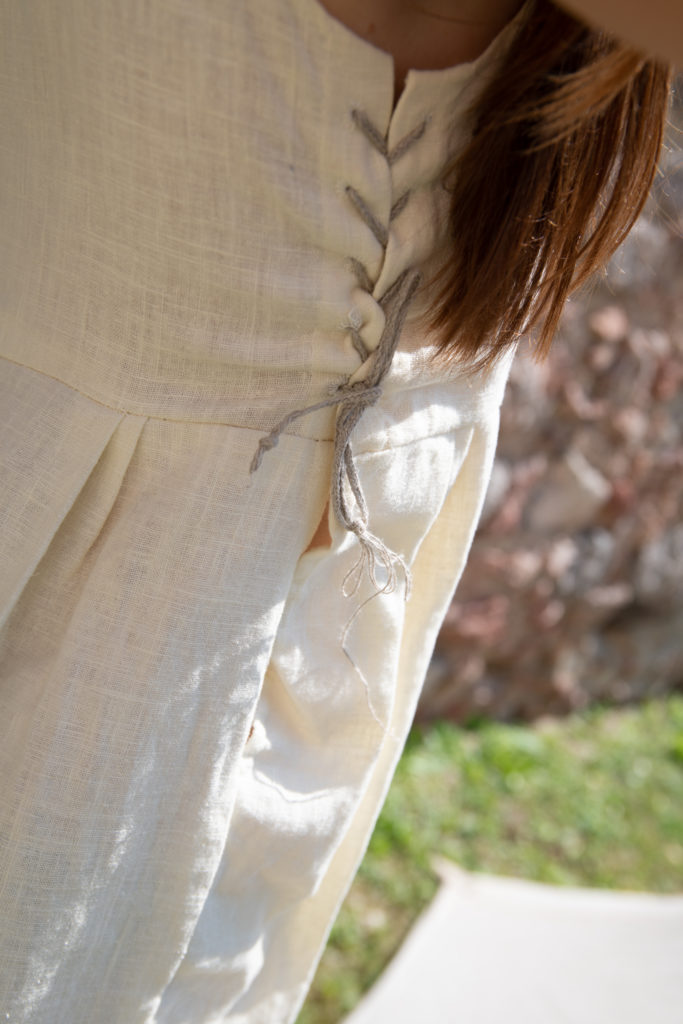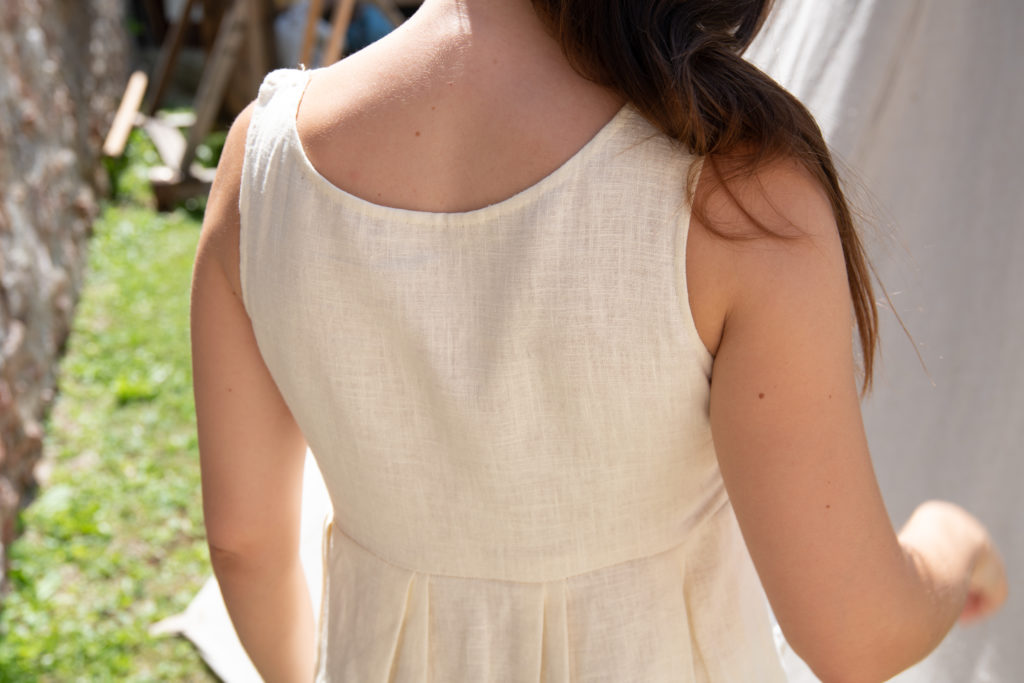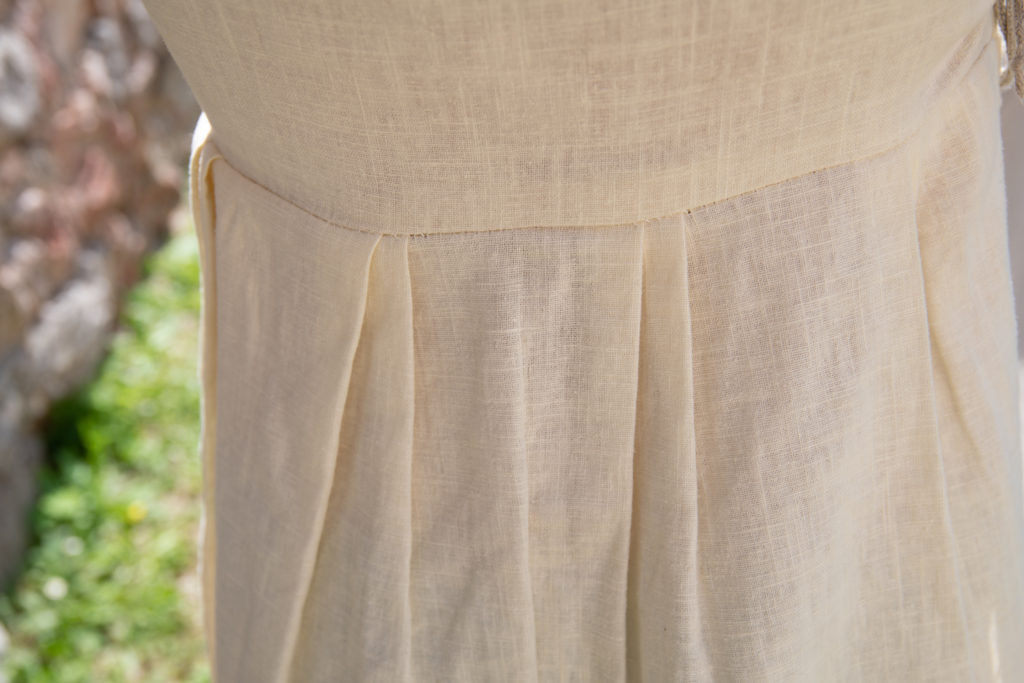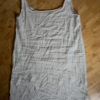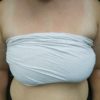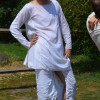A supportive underdress from mid 14th century
Our company colleague Viki has recently made a very pretty underdress with a supportive upper part for her mid 14th century impression and allowed me to write an article about it.
Now, the topic is not a new one and we really dont need to reinvent the wheel for our reconstruction. And credit needs to be given to other reenactors for achieving this. So I would like to recommend the following articles to you that document earlier reconstructions:
Tuttenseck – a reconstruction of one of the Lengberg shirts
Isis Sturtewagen’s reconstruction of a supportive underdress
Katafalks reconstruction of the Lengberg shirt
Reconstruction of a supportive underdress from Neulakko
Another reconstruction of the Lengberg Bra-dress at “In pursuit of medieval excellence”
First, some written sources, that Isis Sturtewagen listet here.
And additionally from the Speyer sumptuary law around 1356:
“Ez sol ouch ir deheine keinen barchenrock, underrock oder ober rock zu den sitenbrisen oder durch engenisse mit snuren inziehen, odir ir lip oder ir brúste mit engenisse intwingen oder binden.”
What all the textual sources show is that even before 1350, changing your bodyshape in order to achieve a certain ideal was a real topic for women. In the high gothic period, the ideal woman looked different from what we want to see today. Small, firm breasts, separated from each other, sitting high on the chest, a slender, rather high sitting waist and soft, round, wide hips, a figure that was rather a little plump than skinny with soft, white skin and a little belly. A pear shape was seen ideal. Now, not every woman has a figure like that given to her by nature.
Talking about forming the body is probably even going a bit to far, indeed men are the first to really shape their bodies with tightly laced doublets in the second half of the 14th century that decreased waist circumferences and increased breast volume, women only start to really change their bodyforms in the 16th century with the first korsets. But at least about the boobs, women in early 14th century could do something. Hanging, large breasts are a sign of age and motherhood and you simply don’t want to signal that. And with form fitting upper garments coming into fashion, you want everything below to look youthfull and tight.
Unfortunately there is only one depiction of such an underdress from mid 14th century from Chorsüdportal Münster zu Heiligenkreuz in Schwäbisch Gmünd (Here a closer description of the architecture of the church can be found (german only unfortunately) with more dates of the single parts of the church) I do not know of earlier depictions of supportive underdresses.
There is of course the possibility to use a Strophium. I have written about this here.
We decieded to use a cup-less model like on the Schwäbisch-Gmünd depiction and that should suffice for smaller cup sizes like Vikis.
Since the Lengberg finds also have an underdress with a side lacing, we used that for our reconstrution as well.
We first fitted the upper part of the dress and then simply attatched the skirt part with small pleats.
Some more pictural evidence on supportive underwear can be found on my Pinterestcollection.
And here you can find all the important articles and publications about the Lengberg finds.
Related Posts
The following posts might interest you as well:




